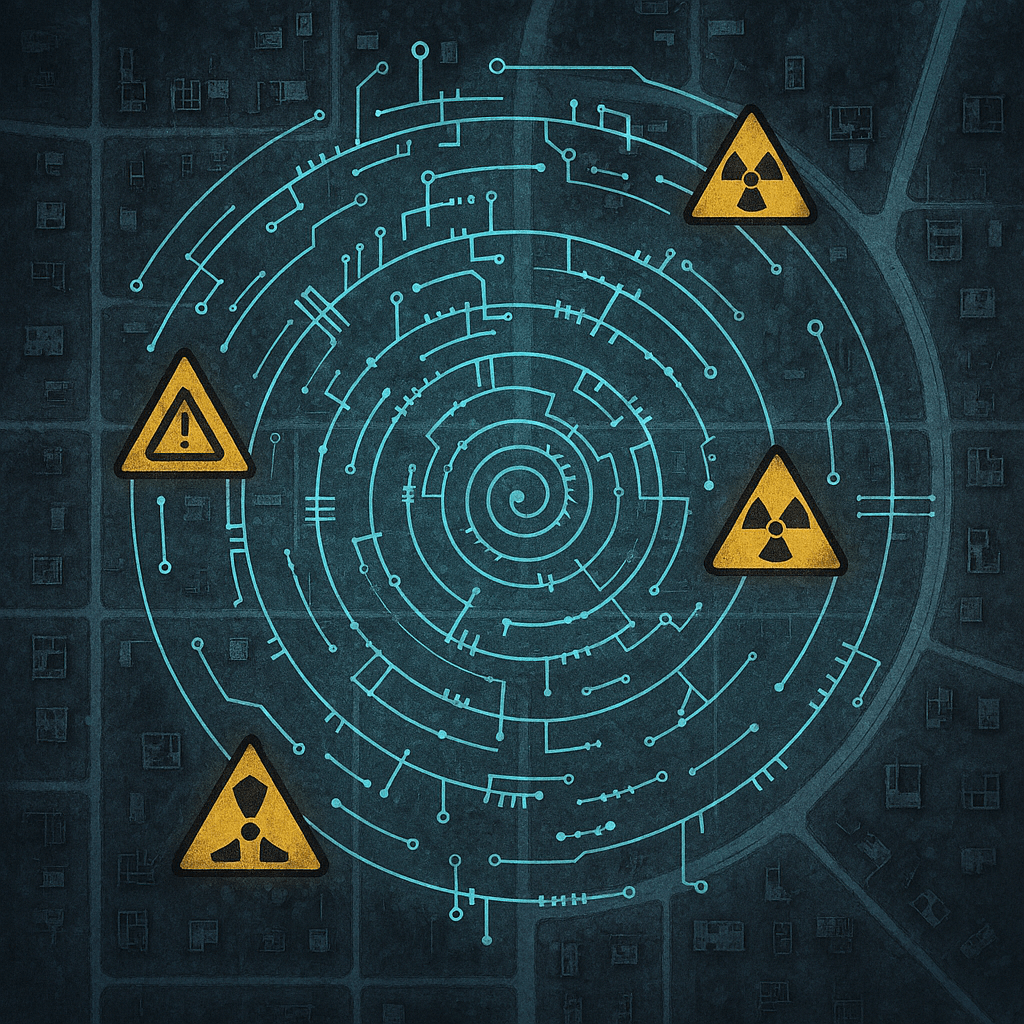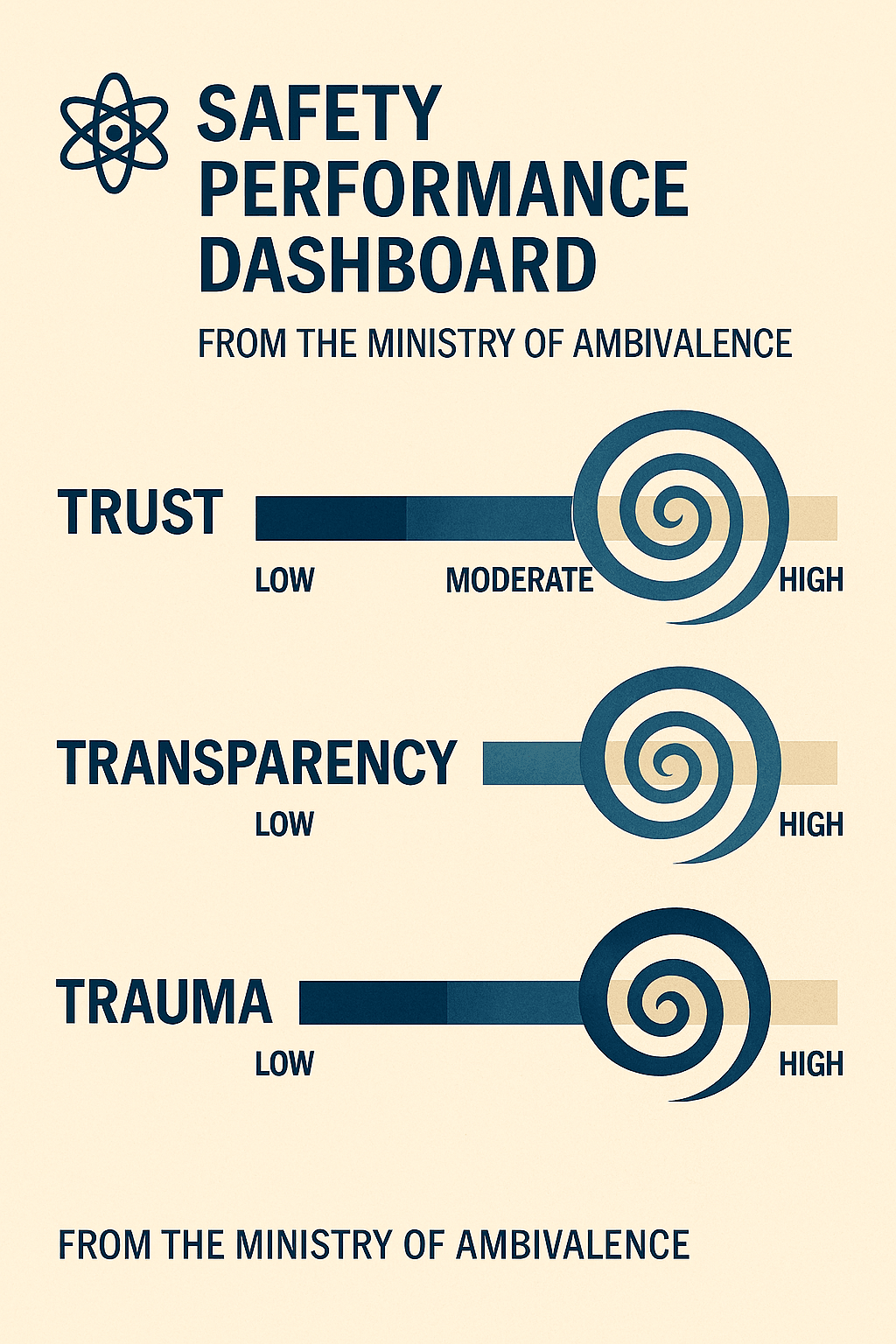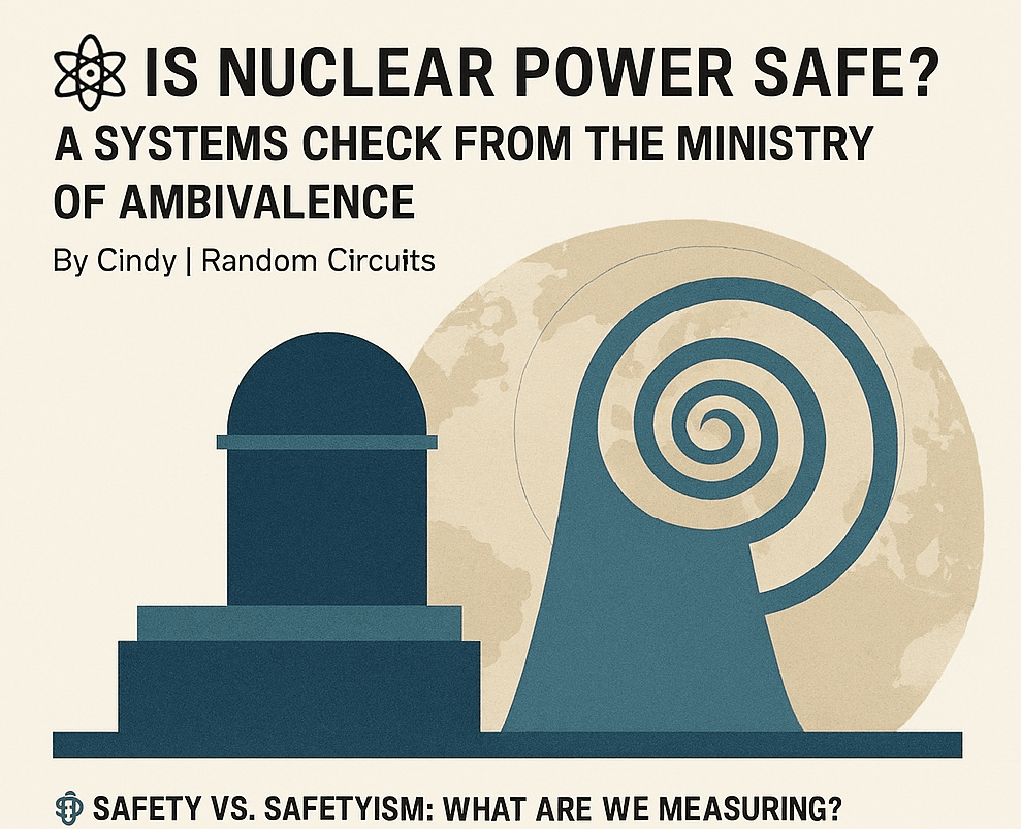When nuclear systems fail, they don’t just break — they unmake the future.
Ministry of Visibility explores nuclear disasters and the performance of safety.
A special dispatch via Random Circuits.
This week, Random Circuits opens its doors to the Ministry of Visibility, whose mandate is to expose the gap between performative empathy and actual help. Together, we trace the emotional and systemic fallout of nuclear catastrophe — and ask what safety really means when the stakes are planetary.
🌊 Fukushima: Nature’s Fury Meets Human Fragility
In 2011, a 9.0 magnitude earthquake triggered a massive tsunami that overwhelmed the Fukushima Daiichi nuclear plant. The result? Triple reactor meltdown.
The risk assessments had accounted for earthquakes — but not a tsunami of that scale. Because “rare” often means “dismissed.”
• Over 100,000 residents evacuated, many permanently.
• Land contaminated with Cesium-137, half-life: 30 years.
• Survivors face lifelong health screenings, reproductive uncertainty, and social stigma.
This wasn’t just a failure of infrastructure. It was a failure of imagination — of designing for the probable while ignoring the catastrophic.
🧍♂️ Chernobyl: Human Error with Generational Consequences
In 1986, a flawed safety test, poor reactor design, and institutional denial led to the explosion at Chernobyl.
The fallout was literal and figurative:
• 6,000+ cases of thyroid cancer in children.
• A spike in birth defects and cognitive impairments.
• Entire towns erased. Survivors still navigating ambiguous grief.
Chernobyl wasn’t nature’s doing. It was systemic opacity, where human error was amplified by a culture of silence.

🏚️ Refugees of Memory: When Home Becomes Hazard
Whether it’s nuclear fallout, fire, or flood, the emotional architecture of loss is the same.
People become refugees from their own memories.
• Homes abandoned. Heirlooms lost. Communities scattered.
• The trauma isn’t just relocation — it’s psychological dislocation.
• Survivors carry grief in suitcases, in silence, in the question: Should I even have children?
In Fukushima, they call them nuclear refugees. In Chernobyl, they left behind ghost towns.
And in every disaster, we see the same pattern: support systems that vanish when needed most.
🧮 Who Decides What’s “Safe”?
Safety is often framed as a technical threshold — a number, a dose, a probability.
But real safety is relational. It asks:
• Who gets to define acceptable risk?
• Whose bodies are considered resilient?
• What histories are being sanitized for the sake of progress?
New Zealand’s nuclear-free stance isn’t just policy — it’s cultural memory.
From Mururoa protests to the Rainbow Warrior, it’s a refusal to normalize planetary-scale risk.
🧪 Would You Swim in It?
The IAEA says the treated water from Fukushima has “negligible radiological impact.”
But negligible to whom?
• The water still contains tritium, a radioactive isotope that’s difficult to remove.
• Some scientists argue that the ocean is already stressed — and adding more risk, however “negligible,” is ethically fraught.
• Others point out that safety standards often reflect political compromise, not biological certainty.
So we ask:
Would the officials who signed off on this let their children swim in that water?
Would they live there, eat the fish, rebuild their futures on that soil
In Paris, Mayor Anne Hidalgo swam in the Seine to prove it was clean enough for Olympic athletes.
She called the water “exquisite.” But the river had failed safety tests just weeks earlier, with E. coli levels 10 times above the limit.
So we ask again:
Is it as Safety Swim or a Story?
Because real safety isn’t just technical — it’s embodied.
It’s not about what’s permitted. It’s about what’s lived.

🔄 The Satirical Spiral: Safety as Performance
In the Ministry of Visibility, we track how support systems perform legitimacy.
Nuclear safety is no exception:
• Infographics show smiling atoms and clean skies
• Regulatory bodies cite decades of “incident-free” operation
• Public discourse treats dissent as irrational
But satire reminds us:
A system that needs this much reassurance might not be as stable as it claims.
🌍 Recovery or Rebranding?
Fukushima’s decontamination is progressing. Some residents are returning.
Ukraine’s exclusion zones are being eyed for tourism and solar farms.
But are we repopulating — or just rebranding?
• The Zaporizhzhia plant still loses power.
• The Kakhovka dam collapse poisoned ecosystems and disrupted nuclear cooling systems.
And the question lingers:
Are we rehabilitating land — or slowly poisoning our planet?

💡 So, Is It Safe?
• Technically? Yes.
• Systemically? It depends who you ask.
• Emotionally? That’s a different kind of fallout.
🌀 Closing the Circuit
At the Ministry of Visibility, we believe critique is invitation.
So here’s ours:
• Design systems that can hold grief.
• Build support that doesn’t vanish when the improbable becomes real.
• And never confuse resilience with consent.
🛸Exposure. The Great unknown.
These are the voyages of Random Circuits, boldly entering the arena of ideas that disrupt, challenge, and transform.

